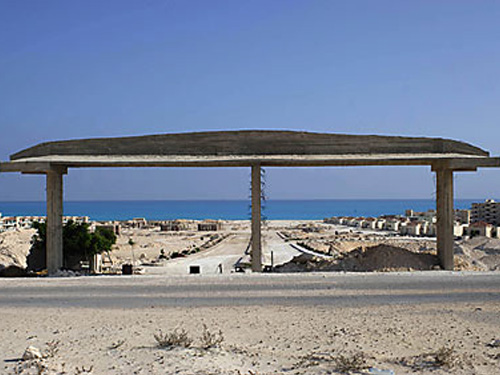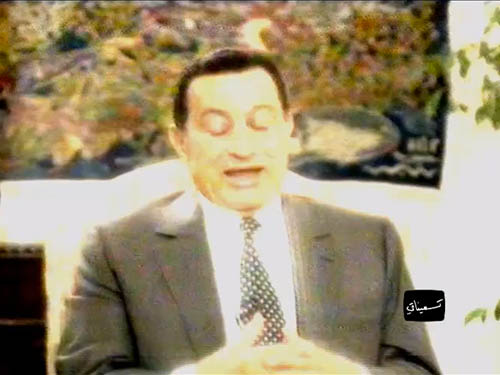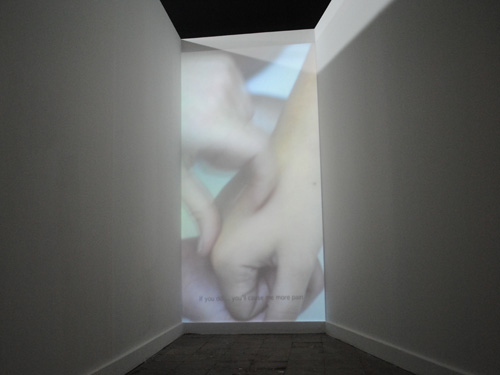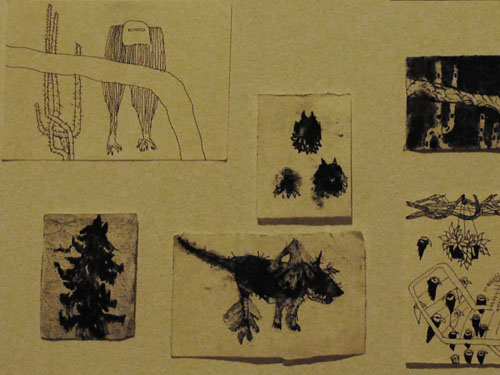
In the late summer of 2002, at a small office of the ground floor of what is today the exhibition space of the Townhouse gallery, a group of artists, curators and volunteers were working around the clock. Some were debating the translation of a cohort of complex texts from English to Arabic while others were exchanging views on a brochure design. There was the excitement of throwing a big event. PhotoCairo was being conceived and, today, it is living through its fifth edition.
On its onset, the show came at the heels of Nitaq, another large-scale downtown-based art festival, with a similar ambition of drawing attention to singular works through the totality of an overall, multifaceted show.
Throughout its different configurations, PhotoCairo traveled from being a tribute to photography and its form-related conversations, to interrogating representation, to engaging with the complex question of what art does at times of brewing crises.
Aleya Hamza, the co-curator of PhotoCairo 3 and 4, sees that the show has groomed “a spirit of enquiry,” that is not limited to thinking and intellectual processes but to the generation and stimulation of production. She highlights dialogue as one of its fortes.
“The beauty of PhotoCairo is that it has managed to be a very dialogue-driven project … I believe that is an integral part of the project in general and I think this is what makes it so timely, because it’s not just about an abstract idea that someone comes up with and imposes on a certain location. It has always stemmed out of the conditions of a certain intersection between artists, curator, institutions, time and place,” she says.
More specifically, Negar Azimi, the founding curator of the show finds that PhotoCairo has had some discursive merits in the arena of photography and image. “PhotoCairo has managed to bend ideas about what photography is and could be, which in of itself is interesting. At the same time, in its ensuing iterations, it’s managed to create a community of people interested in the lives of images,” she says.
In 2002, PhotoCairo’s catalogues tell us that the large-scale visual art show is concerned with the democratic attribute of the camera, its accessibility and far reaching effect. They also tell us that the show was interested in attracting a diversity of audiences, beyond the regular clique of gallery goers.
Azimi explains that the thrust was to crystallize the various moments and ways in which photography is experienced. “The instinct was to emphasize the multiple ways one could encounter photography in the world around them through the TV screen, poster culture, jpegs floating here and there,” she says.
A case in point is Lara Baladi’s work, “Al-Fanous Al-Sehri” (The Magic Lantern), an installation featuring X-rayed images of a pregnant doll inside light boxes, pegged to a lantern modeled after an Islamic architecture star in the middle. For Baladi, the process was instigated when she learned from a relative, in the presence of a radiologist, that there are some pregnant dolls on sale. She got interested in how questions of reproduction and revival can figure in a plastic object and she further enquired this by taking the dolls for X-rays with the help of the radiologist.
The work promotes seeing on different levels: X-ray machines as photographic devices to see the inception of beings, pregnant dolls as commercial objects to see the process of reproduction, and the lantern as a spiritual relic to see the circular process of living, giving birth and dying.
PhotoCairo 2 continued in 2003 to be interested in attracting diversified audiences, “from the neighborhood car mechanics who wandered into a hallowed garage space to see Hassan Khan’s “Tabla Dub,” to distinguished members of the cinema realm who attended the panel discussion surrounding questions related to Egyptian visual culture,” write the curators, Azimi, Hala Elkoussy and William Wells. The show also continues to be interested in challenging preconceived notions of what a camera does and what a photographer should be, by tapping into the divergences of different streams of photography be it documentary, propositional, amateur, professional, journalistic or artistic.
Then PhotoCairo 3 in 2005 moved more into the question of what photography does, and not only what photography is or can be. The show was interested in how visuals mediate positions and how artists tap into this dynamic to explore how meaning is produced in different contexts through imagery.
Hamza detects the evolution of the show from one that moves from interrogating the power of the medium to its representational functions. “The democratic power of the photograph which perhaps had been the key framework for the first two editions was already understood. It was the moment to try and think of the photograph beyond the frame. This is when we started to talk about reproducible image rather than the photograph, to think about representation,” she says.
In this chapter, artist Rana ElNemr interrogated the visual process of producing an index or a position of socio-economic stature through a series dubbed “Coastline,” whereby she documents entrances to summerhouses in the affluent Mediterranean northwest coast of Egypt. Through a series of photos showcasing varieties of tastes and aesthetics in the gates’ architectures and designs, ElNemr taps into the heterogeneity of the manifestations of wealth even if its proprietors have an eye on producing one singular known identity.
Traveling between the medium and production of meaning continued throughout the 2008 edition, PhotoCairo 4, which also took note of the political moment. While this has not been the most active year in terms of expressive public dissent, there were various indexes of a brewing turmoil, whose actors fall outside the stream of mainstream media consciousness.
Hamza points out to the work of artist Mohamed Allam, who displayed a video titled “A Stream of the Holy Words” at the Townhouse factory space. The video channel displayed a seven-minute monologue by a man whose face’s upper side is chopped off the frame, giving optimal focus on his mouth and talking process and symbolizing his anonymity to the public sphere. This visual relic refers to the countless verbal and informal conversations that are not commonly counted toward the construction of narrative. Yet, they represent an important shift in challenging pre-set notions and prevalent narratives.
“When I saw this piece again this year, I was blown away by the way in which it anticipated and almost called for revolution,” Hamza reflects.
Allam’s video did not necessarily spell out a word on politics or revolution, but it inhabited the condition of revolution in as much as it fetishized the function of the subaltern in a wider context that often trivialized it.
Weary as many of the overt and uni-dimensional political coining to artwork, and being a staunch believer in that the utility of art doesn’t stem from its social engagement, Azimi is confident that PhotoCairo should not bear any of these responsibilities. “But given what’s happened in Egypt over the past decade, that progression has probably been inevitable and built into the event’s DNA.”
Today, Mia Jankowicz walks us to PhotoCairo 5, which she curates, with a slightly different proposition that transcends the representational realm the show has been interested in. In her text published by Egypt Independent last week, she wrote, “I wanted to make a show with art that can make us feel and react — work that transmits feelings as much as it attempts to represent events.”
She departs from the very sensitivities born around “revolutionary art” and the reactive quest to stay away from representing the revolution in artwork for fear of reductionism, fetishization and eventually, misrepresentation. From that point on, she calls on alternative ways of experiencing and representing reality outside the confines of the rational. Without meaning it or caring to mean it, in a way PhotoCairo 5 speaks to the experimental condition of revolution. And in as far as revolution is an adventure more than a plot, it is, most certainly, an engaging process.




